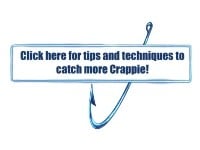Unlike fishing lures however, many of us fall far from the path when it comes to other gear in our boats. A prime example of this is our planer board clips. Many guys have the original clips on their boards with no extras on board. As time goes on, the pads get worn down, the pins get clipped off, they become brittle due to cold use cycles, and people are left with equipment that doesn’t function properly. Having an extra supply onboard can be the difference between a successful trip and one that ends with endless trips turning around to pick up lost boards, premature releases, or a lost board entirely.
For me, I carry a rather large supply of extra Off Shore Tackle OR16 (red) clips on hand. I not only use them on the tail of my Off Shore boards but also to affix drop weights and Off Shore Guppy weights. When I have a new clip, I always start them out in their light position. This is done by adjusting the spring inside of the clip to its rear location. As the clips start to wear in, I might have to adjust them to their stronger setting (spring in the front). I always check for pin damage and also for pad wear. The majority of the time, I run OR19 (orange) clips on the front of all of my Off Shore planer boards. I start each day off with the spring setting in the loose position. If I start to find that wind and waves are causing premature line releases, I might adjust the springs to their heavier setting. If this still doesn’t fix the issue, it is usually caused by a worn down pad and I will change out to a new clip.
During the off season I go through all of my OR16 and OR19 clips and replace any worn pads. I also inspect my OR16 clips for pin wear. One little trick that I have picked up over the years is learning how to properly store my clips. When they are not in use, I like to slide a tiny piece of wax paper in between the pads. This ensures that direct heat or sunlight will not allow the pads to stick together. Although I have seen regular paper used, it is often prone to absorbing moisture and water. This is why I prefer to use wax paper.
Replacement parts are available from Off Shore Tackle in order to change out your pads on the OR16 and OR19 clips. For the OR16 (red) clips you will need Off Shore Model # HRRP16HL. For the OR19 (orange) clips you will need Off Shore Model # HRRP16
There are a few pieces of equipment I utilize in order to make the process a lot easier. I use a pinch style bar clamp, a flat file, a small flat head screw driver, a razor blade or other thin metal object, and super glue.
Utilizing the flat file, I take my mini screwdriver and file down the end of it so that it is sharp. I utilize this tool to remove the old pads and scrape any excess glue from the old surface. To hold the Off Shore Clips in place, I set the spring at its lightest tension setting (spring in the back) and pinch it together with the clamp. This opens the clip and allows me to work on it without constantly pushing it together with my fingers.
Once the clamp is open I use the screwdriver tool I created in order to remove the old pads and scrape any extra glue from the surface. Be careful not to damage the pins on your OR16 (red) clips.
Once removed you should have a clean surface to affix your new pad.
For the OR19 (orange) clips, I put a small dab of superglue in the middle of the pad. Just enough so that when it is pushed down the glue doesn’t ooze out of the edges. For the OR16 (red) pads, I put tiny drops around the open hole (usually 4 total)
You can use a set of forceps, tweezers, or your fingers to put the pad inside the cavity. Flip the clip over and complete the other side. Once you are down, put your razor blade in between the pads and release your pinch clamp. This will provide even pressure on your pads without having them stick together due to any extra glue that might squeeze out.
After a couple of minutes you can remove the razor and add your wax paper. For the OR16 (red clips) I do NOT utilize the razor for pressure. I use wax paper between the pads and allow the pressure of the clip to do the job. This ensures that the pads get proper pressure, the pins don’t get covered with glue, and the pads do not stick together.
Having properly functioning clips on board can mean all the difference in the world when you start running in to issues where your boards are slipping, you are getting premature releases, or you start to lose boards in the water.




 Articles and Stories
Articles and Stories

















vBulletin Message